Everyday Mathematics 3rd Grade Answer Key Unit 1 Math Tools, Time, and Multiplication
Everyday Mathematics Grade 3 Home Link 1.1 Answers
Finding Differences on a Number Grid
Family Note Today your child reviewed patterns on the number grid and used them to find differences between numbers. For example, one way to find the difference between 87 and 115 on the number grid is: Start at 87. Count the number of tens to 107. There are 2 tens, or 20. Count the number of ones from 107 to 115. There are 8 ones, or 8. The difference between 87 and 107 is 2 tens and 8 ones, or 28. Formal subtraction methods will be covered in the next unit.
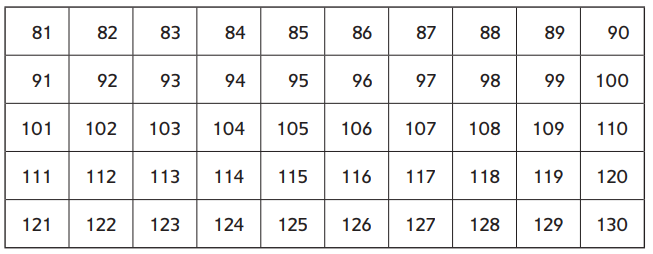
Use the number grid to help you solve the following problems.
Question 1.
The difference between 83 and 109 is _______ .
Answer:
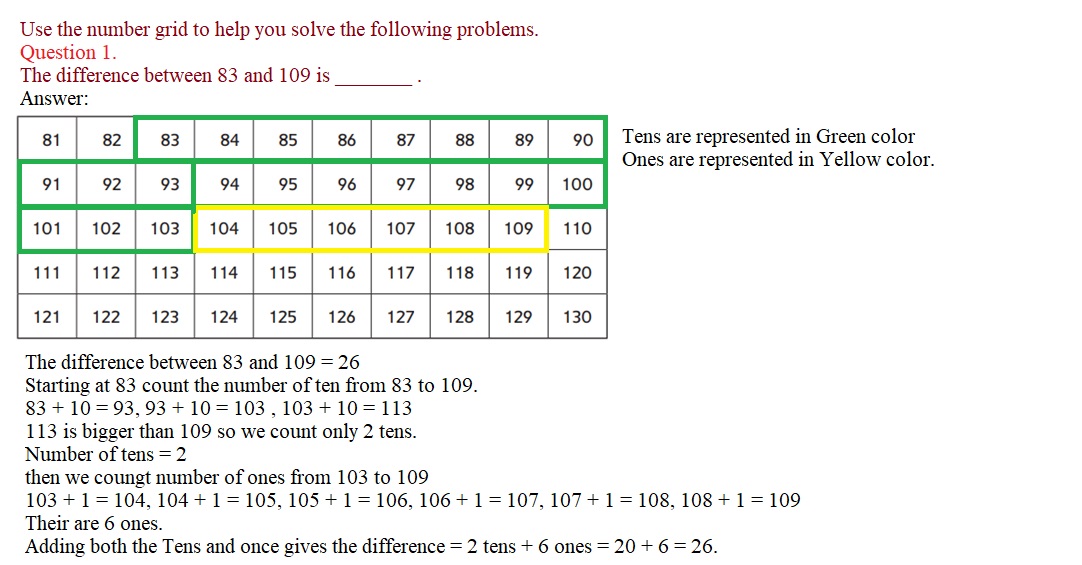
Question 2.
The difference between 97 and 125 is _______.
Answer:

Question 3.
Explain how you solved Problem 2.
Answer:
I solved the problem 2 by using the number grid.
I first counted the number of tens and then counted the number of ones.
After counting the tens and ones added the tens and ones and got the difference. You can look how i did in the image below.

Practice
Solve.
Question 4.
13 = 7 + _______
Answer:
13 – 7 = 6
13 = 7 + 6
Question 5.
13 = 6 + _______
Answer:
13 – 6 = 7
13 = 6 + 7
Question 6.
6 = _______ – 7
Answer:
6 + 7 = 13
6 = 13 – 7
Question 7.
7 = _______ – 6
Answer:
7 + 6 = 13
7 = 13 – 6 .
Everyday Math Grade 3 Home Link 1.3 Answer Key
Telling Time
Family Note Today your child explored some of the math tools commonly used in third grade. We reviewed how to read a ruler to the nearest inch and centimeter, and how to tell time to the nearest hour, half hour, and 5 minutes. Help your child read each time by paying attention to the position of both the hour and the minute hands.
Question 1.
Draw the hour hand and the minute hand to show the time right now. Write the time.
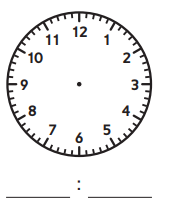
Answer:

Explanation:
Clock is divided into 12 parts and each part is equal to 5 minutes.
Clock have 2 hands. Short hand is called the hour hand and the longer hand is called the minute hand.
As u can see in the image
Short hand is pointed between 5 and 6 represents 5
and the Long hand is pointing to 8. 8 × 5 = 40.
So, the time on the clock is “5:40 o’clock”.
Write the time shown.
Question 2.

Answer:
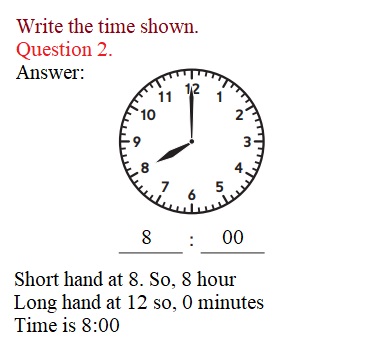
Explanation:
Clock is divided into 12 parts and each part is equal to 5 minutes.
Clock have 2 hands. Short hand is called the hour hand and the longer hand is called the minute hand.
As u can see in the image
Short hand is pointing to 8
and the Long hand is pointing to 12.
So, the time on the clock is “8 o’clock”.
Question 3.

Answer:

Explanation:
Clock is divided into 12 parts and each part is equal to 5 minutes.
Clock have 2 hands. Short hand is called the hour hand and the longer hand is called the minute hand.
As u can see in the image
Short hand is pointed in between 3 and 4
and the Long hand is pointing to 6.
So, the time on the clock is “3:30 o’clock”.
Question 4.
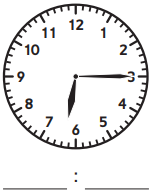
Answer:
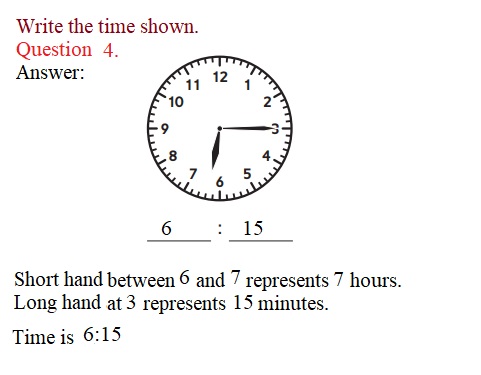
Explanation:
Clock is divided into 12 parts and each part is equal to 5 minutes.
Clock have 2 hands. Short hand is called the hour hand and the longer hand is called the minute hand.
As u can see in the image
Short hand is pointed between 6 past 7
and the Long hand is pointing to 3.
So, the time on the clock is “6:15 o’clock”.
Question 5.

Answer:

Explanation:
Clock is divided into 12 parts and each part is equal to 5 minutes.
Clock have 2 hands. Short hand is called the hour hand and the longer hand is called the minute hand.
As u can see in the image
Short hand is pointed between 11 and 12
and the Long hand is pointing to 9.
So, the time on the clock is “11:45 o’clock”.
Question 6.
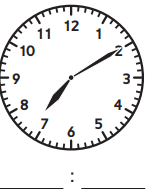
Answer:
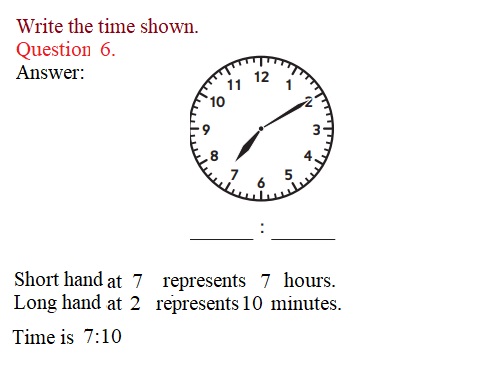
Explanation:
Clock is divided into 12 parts and each part is equal to 5 minutes.
Clock have 2 hands. Short hand is called the hour hand and the longer hand is called the minute hand.
As u can see in the image
Short hand is pointed to 7
and the Long hand is pointing to 2.
So, the time on the clock is “7:10 o’clock”.
Question 7.
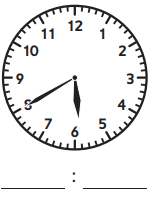
Answer:

Explanation:
Clock is divided into 12 parts and each part is equal to 5 minutes.
Clock have 2 hands. Short hand is called the hour hand and the longer hand is called the minute hand.
As u can see in the image
Short hand is pointed between 5 and 6
and the Long hand is pointing to 8.
So, the time on the clock is “5:40 o’clock”.
Question 8.
Show someone how you solved the hardest problem on this page.
Answer:

Explanation:
Clock is divided into 12 parts and each part is equal to 5 minutes.
Clock have 2 hands. Short hand is called the hour hand and the longer hand is called the minute hand.
As u can see in the image
Short hand is pointed between 5 and 6 represents 5
and the Long hand is pointing to 8. 8 × 5 = 40.
So, the time on the clock is “5:40 o’clock”.
Everyday Mathematics Grade 3 Home Link 1.4 Answers
Rounding Numbers
Family Note Today your child used open number lines ( see Example) to help round numbers to the nearest 10 and to the nearest 100. Rounding is one way to estimate calculations. For example, to estimate 83 − 37, your child can round 83 to 80 and 37 to 40, and then easily subtract 80 − 40 = 40, so an estimated answer for 83 − 37 is about 40. The actual answer, 46, is close to 40. Have your child explain how to use an open number line to round numbers.
Please return this Home Link to school tomorrow
Example: What is 72 rounded to the nearest 10? 70

Round each number. Show your work on an open number line.
Question 1.
What is 87 rounded to the nearest 10?

Answer:
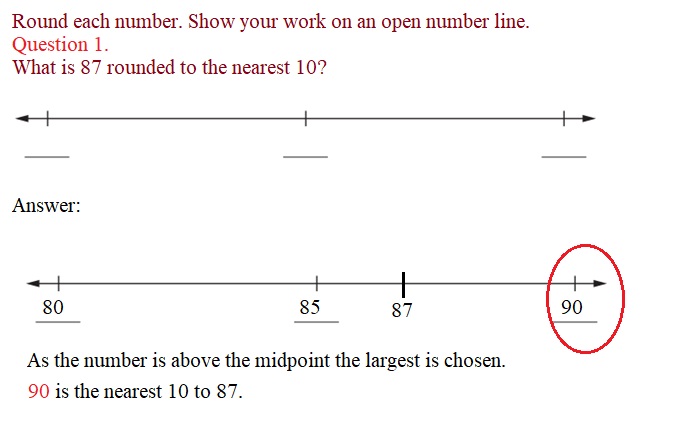
Explanation:
The nearest 10 to 87 are 80 and 90.
80 as the lowest 10 and 90 is the highest 10.
85 is the mid point of 80 and 90.
As 87 is above 85.
As the number is above the midpoint the largest is chosen.
87 is rounded to 90.
Question 2.
What is 283 rounded to the nearest 100?

Answer:

Explanation:
Given 283
The nearest 100 to 283 are 200 and 300.
200 as the lowest 100 and 300 is the highest 100.
250 is the mid point of 200 and 300.
As 283 is above 250.
As the number is above the midpoint the largest is chosen.
283 is rounded to 300.
Question 3.
Round the numbers in the problem below to the nearest 10. You may sketch an open number line to help.
Use the rounded numbers to estimate the answer.
Then solve.

Estimate: ________ + __________ = __________
Is your answer reasonable? Explain.
Answer:

Everyday Math Grade 3 Home Link 1.5 Answer Key
Telling Time to the Nearest Minute
Family Note Today your child practiced telling time to the nearest minute on analog clocks. Children used familiar times on the hour and half hour to help them read more precise times. For example, in Problem 1 the first clock shows 8:00. Children can use 8:00 as a familiar time to help them read the second clock as 8:06. They start at 8:00 and count by 5s to 8:05 and then 1 more to 8:06. As needed, help your child read and write each time.
Write each time shown. Use the first clock to help you read the time on the second clock.
Question 1.
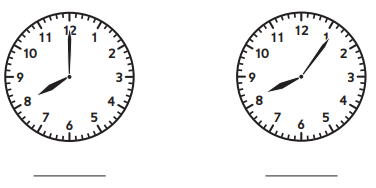
Answer:

Explanation:
The first clock represent 8 o’clock as long hand on 12 and short hand on 8.
In the second clock the short hand on 8 and the long hand is at 1 cross 1 that is 1 represents 5 minutes and plus 1 makes it 5 + 1 = 6 minutes.
It makes the time 8:06 o’clock.
Question 2.
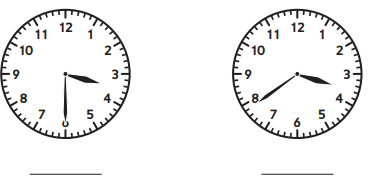
Answer:
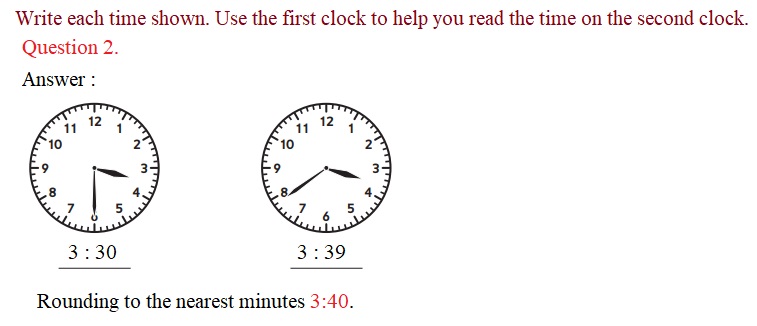
Explanation:
In the first clock the long hand on 6 and short hand between 3 and 4 represent 3:30 o’clock .
In the second clock the short hand between 3 and 4 and the long hand is at 7 cross 4 that is 7 represents
7 × 5 minutes = 35 minutes and plus 4 makes it 35 + 4 = 39 minutes.
It makes the time 3:39 o’clock.
The time is 3:40 o’clock.
Question 3.

Answer:

Explanation:
In the first clock the long hand on 9 and short hand between 1 and 2 represent 1:45 o’clock .
In the second clock the short hand between 1 and 2 and the long hand is at 10 cross 2 that is 10 represents
10× 5 minutes = 50 minutes and plus 2 makes it 50 + 2 = 52 minutes.
It makes the time 1:52 o’clock.
The time is 1:50 o’clock.
Talk about when you may need to tell time to the nearest minute.
Everyday Mathematics Grade 3 Home Link 1.6 Answers
Finding Elapsed Time
Family Note Your child is learning how to use a model, such as a number line or clock, to determine elapsed time. Today we used an open number line like the one shown in the example below to figure out how long a morning class lasts. Have your child explain the example to you.
Example: A swim meet started at 3:45 P.M. and ended at 6:15 P.M. Fill in familiar times on the number line and use it to answer the question.
Ava solved the problem this way:

15 min + 1 hr + 1 hr + 15 min = 2 hrs and 30 min
How long was the swim meet? _ 2__ hours and __30__ minutes
Question 1.
Explain Ava’s strategy to someone at home.
Answer:
Ava was using number line with the clock values. The starting and ending time of the meet are 3:45 and 6:15.
The starting value is 3:45 and the ending value is 6:15
Ava rounded the starting time 3:45 to the nearest hour 4:00 and then added hours 4 + 1 = 5:00 and 5 + 1 = 6:00 and then add 15 minutes to reach the end point.
Question 2.
How much time do you usually have between the end of school and when you go to bed?
I leave school at ________. I go to bed at ________.
Make a model to help you answer the question.
Answer:

Everyday Math Grade 3 Home Link 1.7 Answer Key
Solving Problems in Bar Graphs
Family Note Today your child collected and organized data about the number of letters in the class’s first and last names into tally charts. Then children represented the data in bar graphs. Help your child read the data in the tally chart below and then represent the data on the bar graph. Note that the scale on the bar graph shows intervals of 2, so each interval represents 2 children.
Look at the data in the tally chart.

Show the data in the tally chart on the bar graph. Look carefully at the scale
How Bay School 3rd Graders Get to School

Answer:
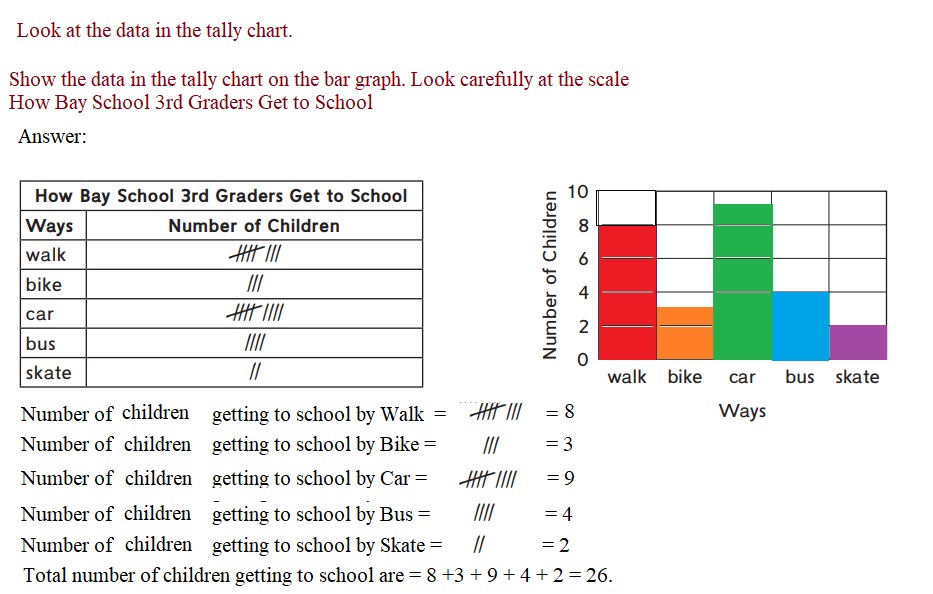
Everyday Mathematics Grade 3 Home Link 1.8 Answers
Sharing Strategies for Multiplication
Family Note Today your child explored number stories that involved placing items in equal groups and organizing them into rows and columns, or arrays. (See examples below.) We used drawings and multiplication number models to help make sense of these stories. Help your child make sense of the number stories below. Note that each story can be represented by either an addition or a multiplication number model; one or the other is acceptable.
For each number story:
- Draw a picture to match.
- Solve the problem.
- Write a number model to represent the story and your answer.
Question 1.
Thaddeus buys 5 bags of apples for a picnic. There are 6 apples in each bag. How many apples does he have?
_________ apples
Number model: ___________
Answer:
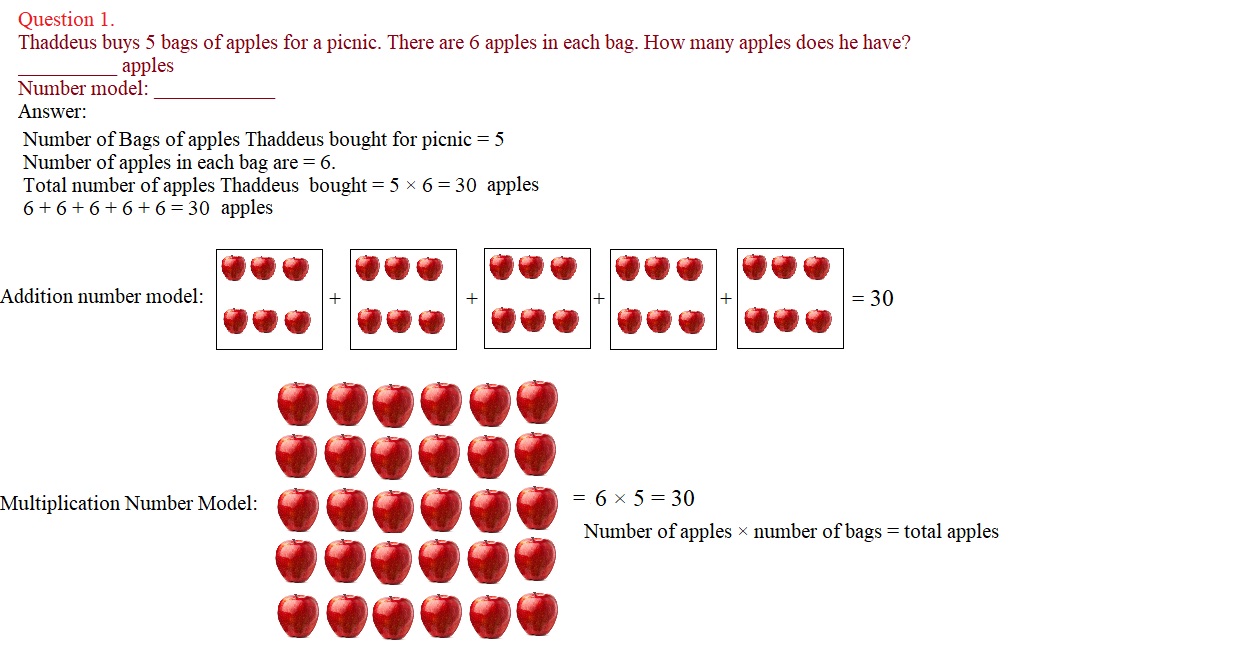
Question 2.
Elsa is planting a garden. She plants 3 rows of vegetables, with 8 plants in each row. How many plants in all are in Elsa’s garden?
___________ plants
Number model: ___________
Answer:

Question 3.
Find equal groups of objects and arrays in your home or around your neighborhood. Record them on the back of this page.
Answer:
Egg tray with 2 rows with 3 eggs each.
Ice tray with 2 rows with 10 ice cubes each.
Makeup kit
Cup cake tray.
Tv remote
Keyboard.
Question 4.
Write an equal-groups number story about one set of objects. Use the back of this page. Solve the number story.
Answer:

Everyday Math Grade 3 Home Link 1.9 Answer Key
Introducing Division
Family Note Today your child explored ways to solve number stories using division. In the stories below the total number of objects is given, so your child needs to find either the number in each group or the number of groups. If needed, help your child count out pennies or dried beans to match the total in each story and use them to act out the story.
Please send in an unopened, 1-liter bottle of water for use in an upcoming lesson on measuring mass
Draw pictures to help you solve each number story. Record your answers.
Question 1.
Connie has 18 toys to put away. She puts 6 toys in each basket. How many baskets does she use?
________ baskets
Answer:
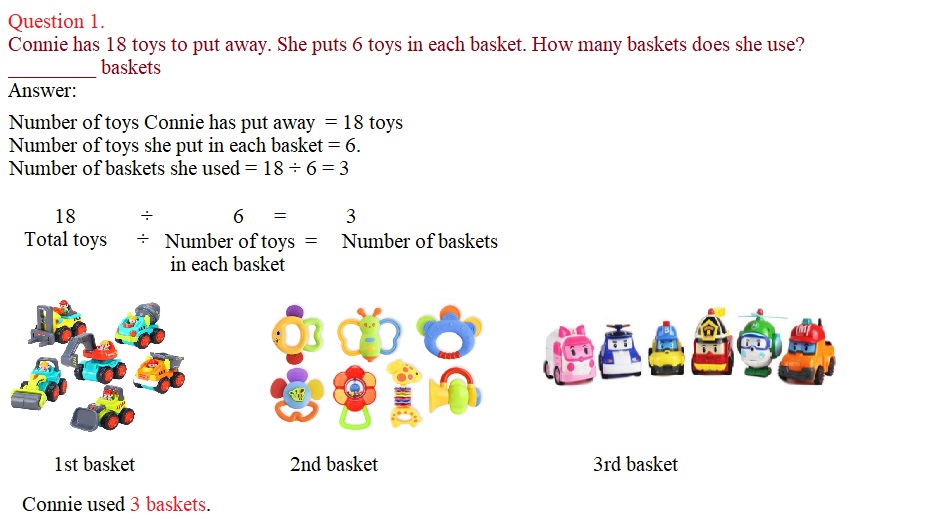
Question 2.
Jamal is bagging prizes for the school fair. There are 30 prizes and Jamal wants to put 3 prizes into each bag. How many bags did Jamal make?
_________ bags
Answer:

Question 3.
Think of things at home that could be shared equally by your family. Record them on the back of this page.
Answer:
Bread packet
Biscuits.
Car
Brinks
Question 4.
Write a number story about equally sharing one of the things you wrote for Problem 3. Use the back of this paper. Then solve your number story.
Answer:
Their are 12 pieces of bread. Sam toasted 4 pieces of bread for each as breakfast . How many people had bread for breakfast?
Total number of bread pieces = 12
Number of bread pieces used by Sam = 4
Number of people had their breakfast = 12 ÷ 4 = 3
3 people had their breakfast.
Everyday Mathematics Grade 3 Home Link 1.10 Answers
Foundational Multiplication Facts
Family Note Today your child worked on developing strategies for solving 2s, 5s, and 10s multiplication facts. These facts will be used later to help solve related multiplication facts. Fact Triangles are the Everyday Mathematics version of traditional flash cards. They are better tools for building fact fluency and mental-math reflexes, however, because they emphasize fact families.
A fact family is a group of facts made from the same three numbers. For 6, 5, and 30, the multiplication and division fact family is 5 × 6 = 30, 6 × 5 = 30, 30 ÷ 6 = 5, 30 ÷ 5 = 6.
Fact Triangles arrange the three numbers such that the product is below the dot at the top and the factors are in the other two corners.
Use Fact Triangles to practice basic facts with your child. Cut out the triangles from the three attached sheets. Cover either the number below the large dot (the product) or one of the numbers in a corner (a factor).

If your child misses a fact, flash the other two problems and then return to the fact that was missed.
Example: Ravi can’t answer 15 ÷ 3. Flash 3 × 5, and then 15 ÷ 5, and finally 15 ÷ 3 a second time.
Make this activity brief and fun. Spend about 10 minutes each night for the next few weeks, or until your child learns them all. The work you do at home will support the work we are doing at school.
×, ÷ Fact
Triangles 1: 2s, 5s, and 10s
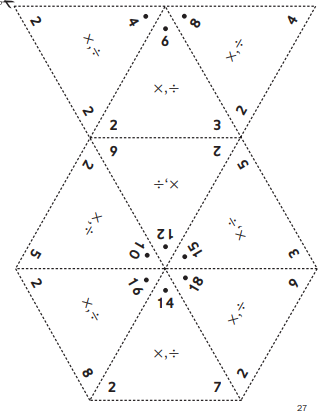
Answer:
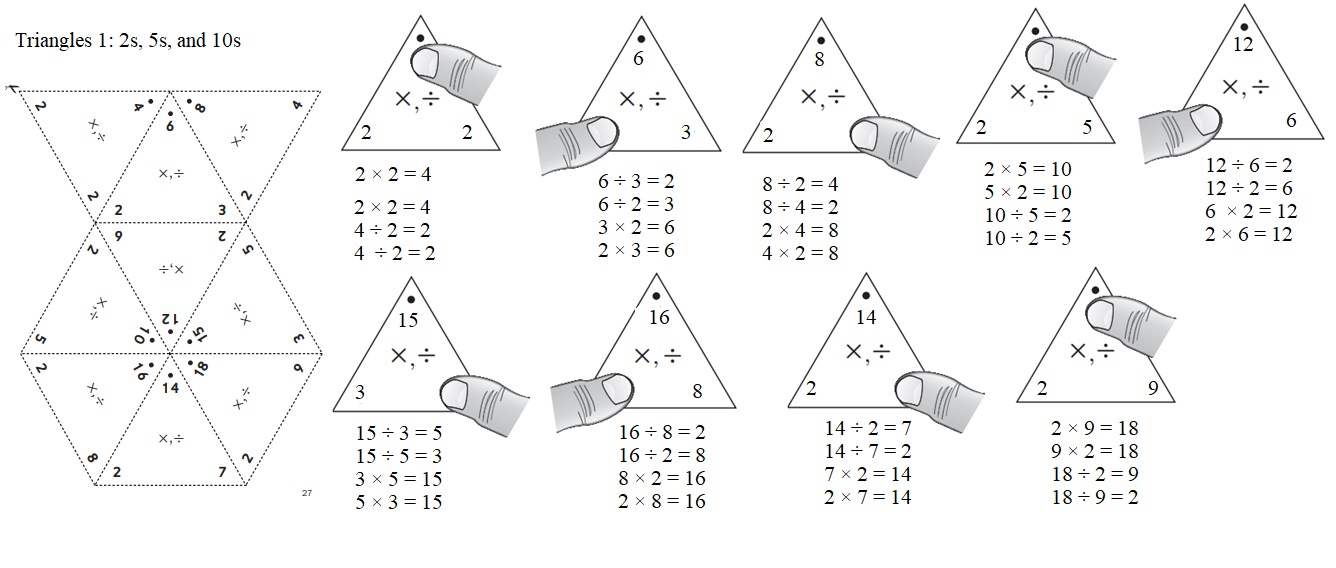
Triangles 2: 2s, 5s, and 10s
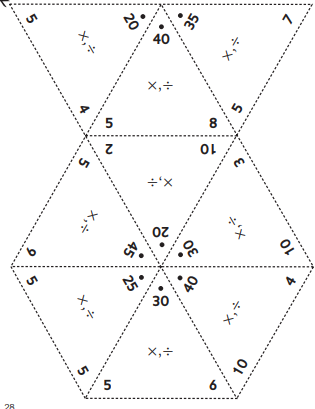
Answer:

Triangles 3: 2s, 5s, and 10s
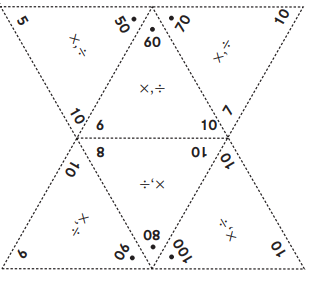
Answer:
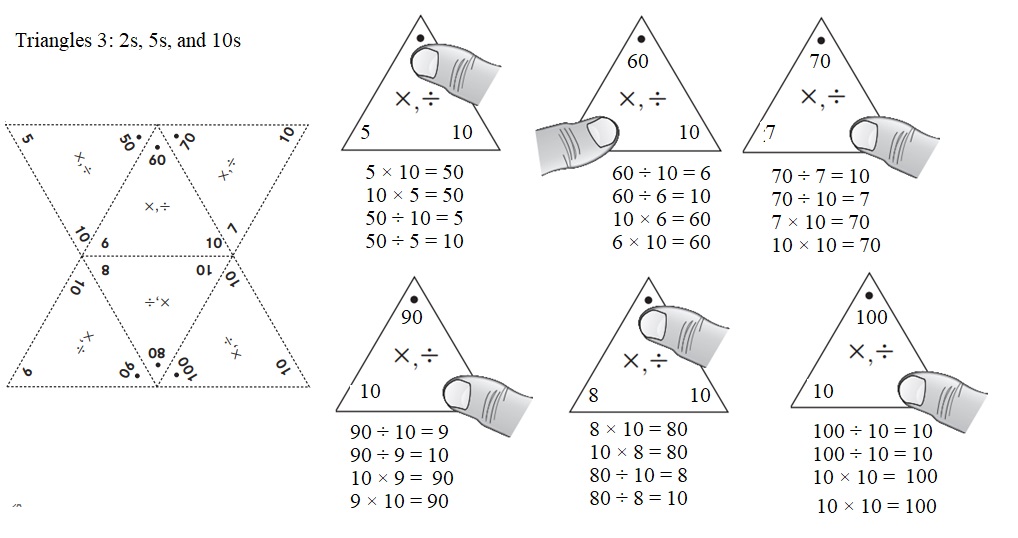
Everyday Math Grade 3 Home Link 1.11 Answer Key
Finding Elapsed Time
Family Note Today your child learned about elapsed time. Children use clocks and open number lines to figure out the total minutes and hours that pass from a start time to an end time. Throughout the year, they will practice calculating lengths of days using sunrise and sunset data.
Example: Ann starts swim practice at 4:05 P.M. and finishes at 4:55 P.M.
How long is Ann’s swim practice? Use the open number line to help . 50 minutes

Calculating elapsed time on an open number line:
5 + 5 + 30 + 10 = 50 minutes
Find the elapsed time. Use the open number line below to help.
Question 1.
Devin left for a bike ride at 10:15 A.M. He arrived at his friend’s house at 10:35 A.M. How long was his bike ride?
Devin’s bike ride was _________ minutes long

Answer:
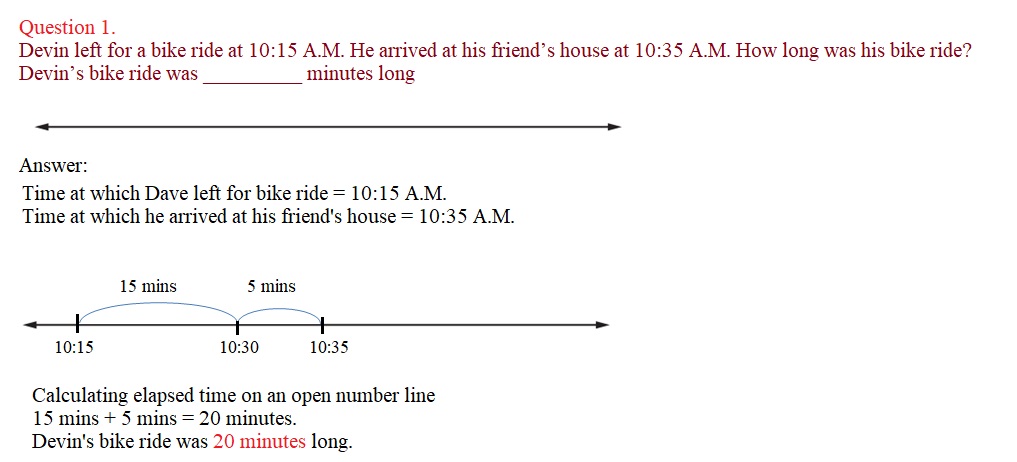
Everyday Math Grade 3 Home Link 1.13 Answer Key
Estimating Mass
Family Note Today your child explored grams and kilograms by measuring the masses of different object s with a pan balance and standard masses. Help your child solve the number stories below.
Solve. Hint: 1 kilogram = 1,000 grams
Question 1.
If a bottle of water has a mass of about 1 kilogram, about how much mass will it have after someone drinks 500 grams of water from it?
about _________ grams
Answer:

Question 2.
Emmi’s bag has a mass of 2 kilograms. Marco’s bag has a mass of 1,000 grams. Whose bag has more mass? Explain
Answer:

Practice
Fill in the unit box. Solve.
Question 3.
20 – 10 = _______
Answer:
20 – 10 = 10
Explanation:
Subtracting any two number gives the difference.
20 – 10 = 10
20 is the minuend
10 is subtrahend
10 is the difference.
Question 4.
20 – 9 = ________
Answer:
20 – 9 = 11
Explanation:
Subtracting any two number gives the difference.
20 – 9 = 11
20 is the minuend
9 is subtrahend
11 is the difference.
Question 5.
20 – 8 = _______
Answer:
20 – 8 = 12
Explanation:
Subtracting any two number gives the difference.
20 – 8 = 12
20 is the minuend
8 is subtrahend
12 is the difference.
Question 6.
20 – 7 = _________
Answer:
20 – 7 = 13
Explanation:
Subtracting any two number gives the difference.
20 – 7 = 13
20 is the minuend
7 is subtrahend
13 is the difference.